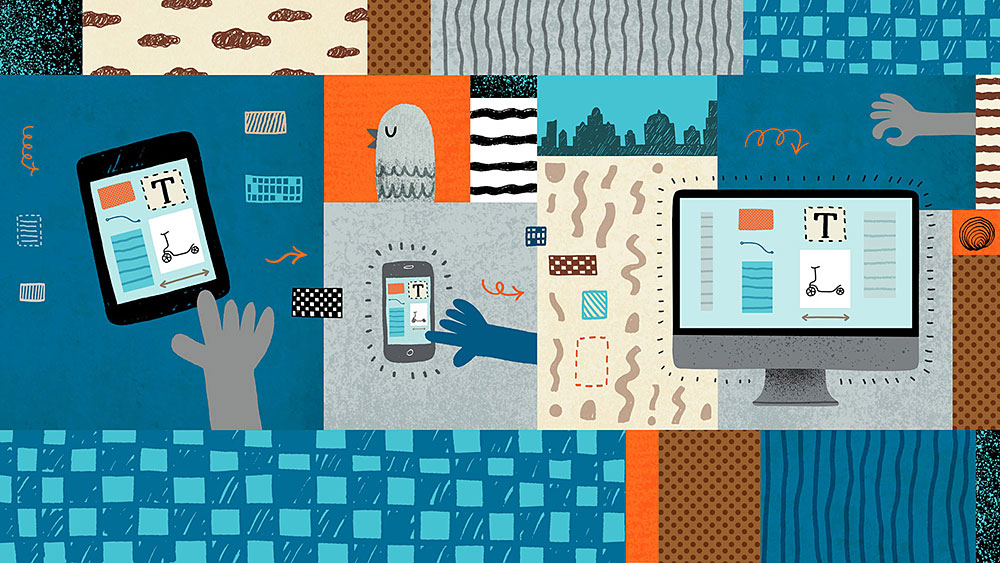
Multiplying Smaller Numbers
Introduction
When you think about the multiplication problem 3 × 4, what comes to mind? An answer? A picture? A situation when you solved this problem?
Use the yellow squares to show the multiplication problem 3 × 4.
When you’re ready, press PLAY to see other ways people show 3 × 4 with the squares.

Arrays
Was your approach similar to any of those above? There are many ways to think about multiplication. An especially useful way to show a combination like 3 × 4 is to push the equal groups together into rows and columns. We call this arrangement a rectangular array. In an array you can see equal groups and use them to find the total.

When we model multiplication with an array, the factors are the vertical and horizontal dimensions, and the product is the total area.

The array below represents the multiplication problem 6 × 7. What is the total area of the array that is made up of 6 rows of 7 squares?

To find the area, did you recall the product of 6 × 7 from memory? If not, did you figure it out by looking for smaller groups of 6 or 7 and then adding them? Maybe you remembered 6 × 6 easily and added another group of 6.
Using arrays helps us find products quickly by using what we already know. Here are several examples.


Partial Products
The colored rectangles within the larger arrays are called partial products, because they are part of the whole product.
Take a moment to explore partial products on the arrays below by moving the slider vertically or horizontally. Which partial products make it faster and easier to find each total?
[Intro text for second example.]
[Intro text for third example.]
[Intro text for fourth example.]
Properties of Multiplication
The strategies you’ve been exploring with partial products work because of the distributive property. According to the distributive property, you can split one of the factors into two addends and multiply each addend by the other factor. This produces the partial products. Finally, you can add the partial products to find the total product.

The distributive property also works if you think of one factor as the difference between two numbers or as the sum of a positive and a negative number. This allows us to use what we know about multiplying by 10 to multiply by 9.

The array also shows how the commutative property works. The commutative property states that changing the order of the factors does not change their product.

We can also use the array to show how the associative property works. According to the associative property, changing the grouping of factors does not change their product. This allows us to express one or both of the factors as the product of other numbers and then perform the multiplication in the order that makes the calculation easiest. In the model, you see that one multiplication (3 × 7 = 21) is represented by the array, and the other multiplication is represented by duplicating that array some number of times.

In Closing
As you can see, the array gives us a powerful way to show and solve multiplication problems. It also provides insight about the properties of the operation itself. In later chapters, we’ll see how we can multiply and divide multi-digit numbers and decimals using arrays.